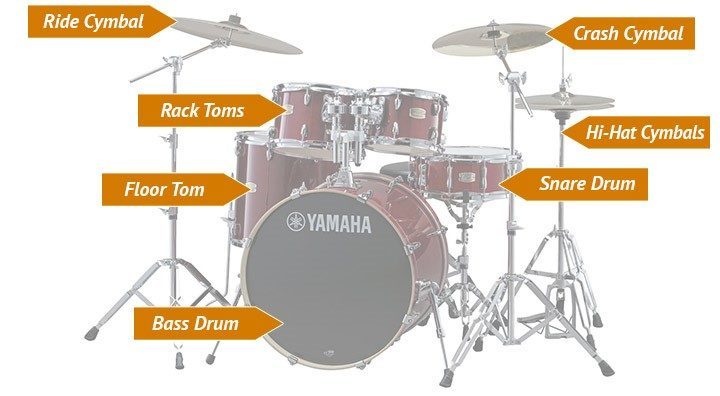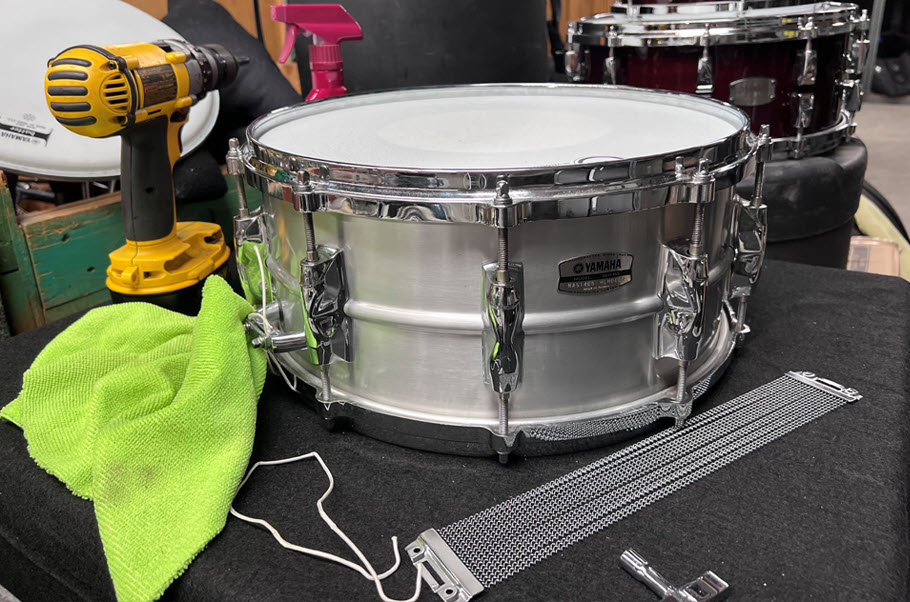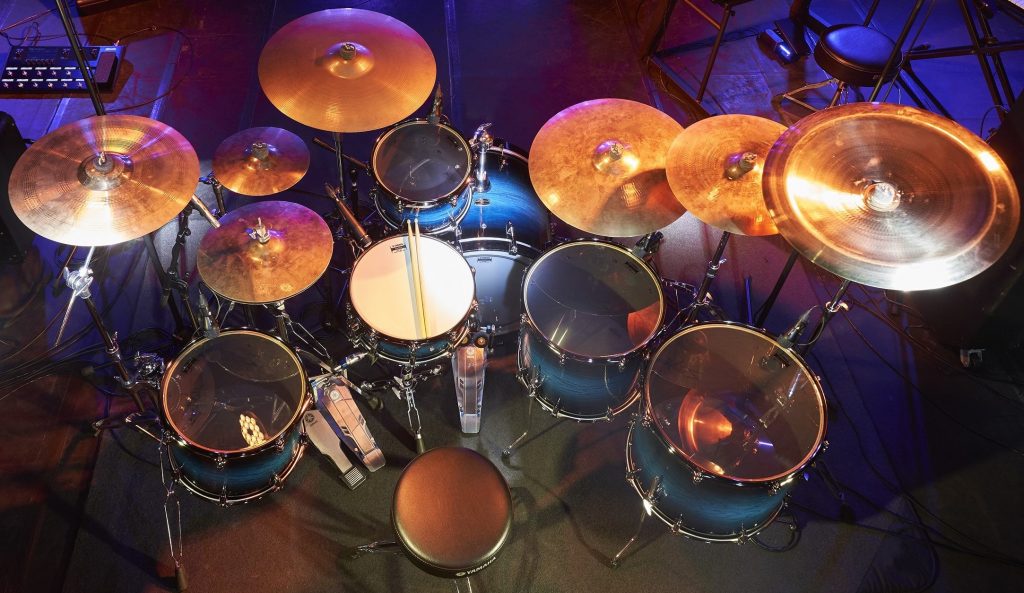So Your Child Wants to Learn to Play Drums, Part 2
Everything you need to know about acoustic drum sets.
In Part 1 of this three-part series, we talked about the general differences between an acoustic drum set and an electronic one. Here in Part 2, we’ll focus on the acoustic variety.

The parts of a drum set (sometimes called a drum “kit”) that your child will use most of the time are the bass (“kick”) drum, snare drum, hi-hat and ride cymbal. These are the basic components of any groove and are therefore the focus of most beginning lessons. A starter drum set may also include one or more crash cymbals and several tom-toms. Typically, at least one small tom-tom will be mounted to the bass drum, in which case it is called a “rack” tom. Larger ones may be freestanding, in which case they are called “floor” toms.
Drum Sizes
Beginning drum sets usually come in standard drum sizes. The snare drum will typically be 14″ in diameter; rack toms will be 10″ or 12″; floor toms will be 14″ or 16″; and the bass drum will be 20″ or 22″. The only real consideration here is that if your child is short, a 20″ bass drum is probably a better choice, since any rack toms mounted to it will be easier to reach. (There are 18″ bass drum options also available but the larger sizes have a more standard tone and tend to be better suited for a variety of different types of music.)
Smaller drums are typically tighter and higher in tone, with more of a controlled sound; while larger drums resonate more and generate lower tones. Your child should be able to play any style of music on a well-constructed acoustic kit.
Shell Types
There are many types of hardwoods used by drum manufacturers. The most common found in entry-level kits are birch, maple and poplar. While most woods are capable of creating a good tone, the construction of the shell will determine how easy the drum is to tune, as well as the sound quality at various tuning ranges or dynamic levels.
Drum Heads
Standard drum heads on entry-level kits tend to be inexpensive and need to be replaced after a short time. They may be durable enough to get you started, but in many cases, changing the head to a better quality one can improve the sound of an average drum. Additionally, a higher quality replacement head will wear better and last longer than the original that came with the kit.
Cymbals
This is an element you want to make sure sounds just right when you purchase it! Unlike a poor-sounding drum that you can improve by applying tape or changing the heads, there’s little you can do to change the tonality of a cymbal. Good cymbals will have definition and a warm tone. An entry-level drum set will typically include a pair of thin 14″ hi-hats (cymbals that are mounted horizontally on a stand so that they come in contact with one another with varying pressure as a foot pedal is pressed), a medium-weight 18″ or 20″ ride cymbal, and sometimes a lightweight 16″ crash cymbal too. Many players opt to add a second crash, though this is less commonly found in starter kits.
Hardware
Hardware starts with the bass drum pedal and the hi-hat stand – these can impact the experience of playing the drums as they act as extensions of the feet. Good hardware is not only easy to adjust, it holds up better when traveling. The metal should not bend when adjusting, nor should it lock up after use. Beware of peeling chrome and sharp metal edges. Even lightweight stands should have a sturdy feel. If they tip easily, or are difficult to position, they will only get more difficult to work with as they age.
Drumsticks
This is a another element that needs to be good from the start – you can’t make bad sticks better. Make sure the size is appropriate for your budding young drummer. The 5A is a good starting point for most students; as they begin to develop various musical styles they may want lighter or heaver sticks. In order to prevent injury to both themselves and their drum set, avoid giving developing students sticks that are too large or too heavy.
Drum Key
As discussed in Part 1, this small device is used to tighten the drum heads and raise them up or down in pitch. Most drum sets – even those for beginners – will include such a key. Thankfully they are inexpensive and universal in size, so they’re easy to replace if lost!
Things to Look for in an Acoustic Kit
1. Mass: A good drum has some weight and feels sturdy. If the drum feels light, the metal and shell is a lower quality. While such drums are not necessarily bad, they are typically harder to tune and tend to need to be replaced sooner.
2. Expandability: If the skills and enthusiasm of your young drummer grow in future, make sure you can add extra components and order individual drums in the same color as your current set. Ask what sizes might be available.
3. Substantial features for your investment: Good drums, heads and hardware can cost a bit more, but they will also retain their value and make it easier to trade up when your child is ready.
Things to Avoid in an Acoustic Kit
1. Metal corrosion and poor workmanship: Examine the drum shell inside and out. Pay attention to the appearance of the seams. Are they well-crafted and without flaws? Is the finish smooth, with no “bubbling”? If the work is sloppy, chances are you’ll spend more time repairing or replacing things than actually playing the drums.
2. A manufacturer that doesn’t stand behind their instruments: Research drum brands ahead of time. Look for those that have gotten good reviews from users and/or impartial journalists. Lofty features and marketing claims are hard to substantiate without reviews! Things can break and get worn, but quality endures and is reflected in the way the manufacturer is perceived in the marketplace.
Safety First!
Because your child will come in contact with metal parts and wood that is glued in sheets, the proper manufacture of the drum set components you purchase will ensure the safety of your young musician. It’s particularly important that you inspect metal parts for sharp edges and plating that is not peeling or corroding.
That about covers it for acoustic drums. In Part 3, we’ll examine the electronic drum kit in detail.
Photo courtesy of Reverb.
Click here for more information about Yamaha drums.












